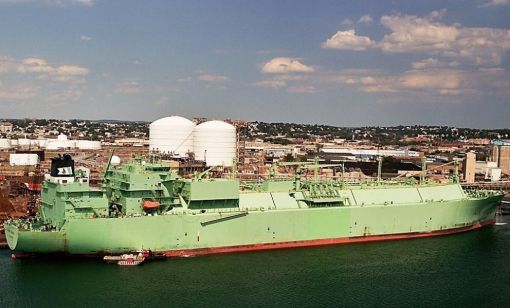Imports
Liquefied Natural Gas (LNG) , Imports
FERC: Closure of LNG Import Plant Threatens New England’s Grid
Despite record U.S. natural gas production, parts of the U.S., including New England, face difficulties finding adequate supplies for power generation.
Legislation , Infrastructure , Imports , Exports , Earnings , Master Limited Partnerships , Liquefied Natural Gas (LNG) , Natural Gas liquids (NGL) , Natural Gas , Crude Oil , Acquisitions & Divestitures , Construction , Rail , System Integrity
Energy Transfer Keeps Focus on Lake Charles LNG Despite Setbacks
Lake Charles LNG is facing regulatory hurdles with the Department of Energy, Energy Transfer executives said during second-quarter earnings call.
Imports
Repsol CEO Asks EU to Stop Imports of Russian Diesel to Europe through Third Destinations
Repsol CEO asks the European Union to enforce sanctions on Russia, prevent diesel imports from routing through third countries.
Liquefied Natural Gas (LNG) , Policy & Regulations , Imports
Dutch Have Cut Bulk of Russian Energy Imports a Year After Ukraine Invasion
The Netherlands is still working to cut off its Russian LNG imports after Russia invaded Ukraine nearly a year ago.
Imports , International
EU Countries Give Mixed Reception to Planned Russian Gas Price Cap
Baltic countries support the proposal, others express doubts.
Liquefied Natural Gas (LNG) , Imports
Germany’s RWE Widens Global Search for LNG Supplies
Power producer expands talks for LNG beyond US and Qatar.
Liquefied Natural Gas (LNG) , Natural Gas , Imports , International , Infrastructure , Tankers
Germany Ramps Up Capacity for LNG Imports to Replace Russian Gas
North Sea port is designated as a hub as four FSRUs are secured.
Crude Oil , Imports
US Refiners Receiving Last Russian Oil Cargoes Before Wind-down
The United States last month set an April 22 ban on imports of Russian crude and refined products.
Crude Oil , Imports
Russian Oil Embargo Could Be Part of Next EU Sanctions Package, Ministers Say
Irish Foreign Minister Simon Coveney said that the hundreds of millions of euros being spent on importing oil from Russia needs to be "cut off" soon.
Crude Oil , Imports , International
China Agrees with US to Release Oil Reserves near Lunar New Year
The release of crude stocks by China will occur around Lunar New Year, which falls on Feb. 1, the sources said.


